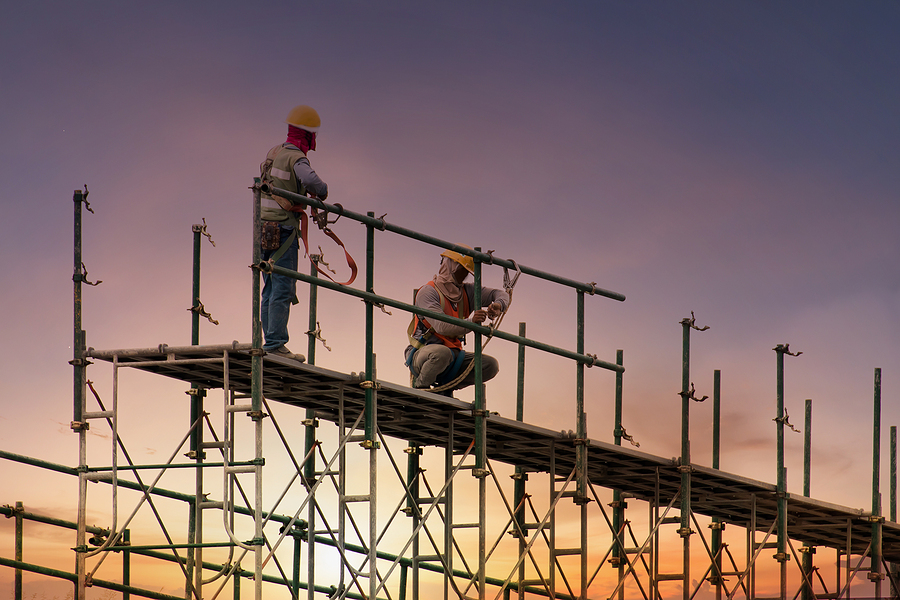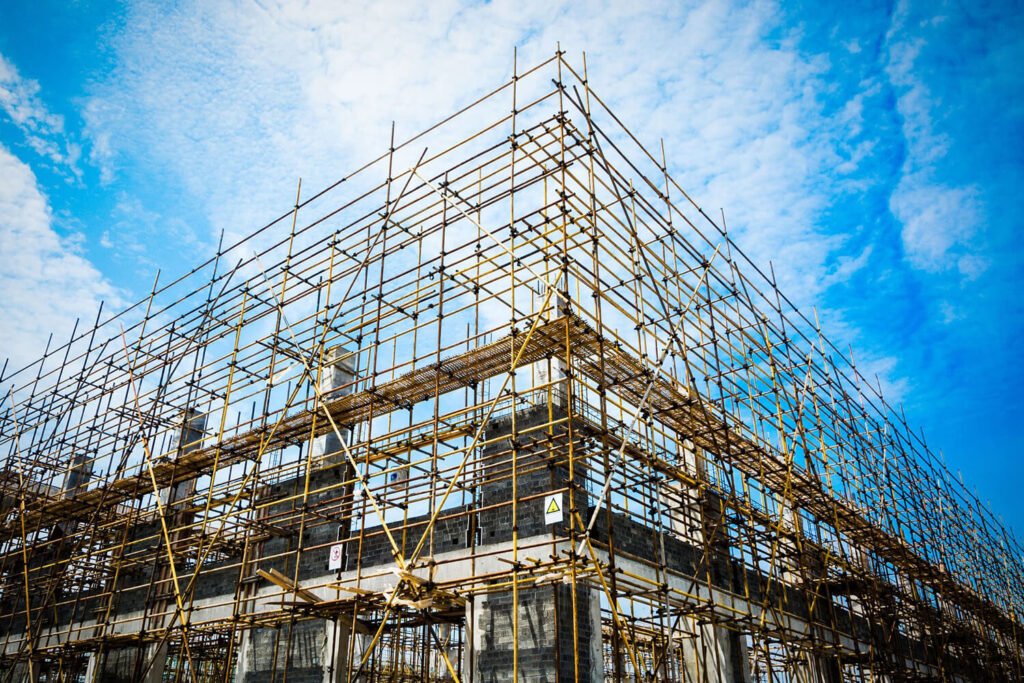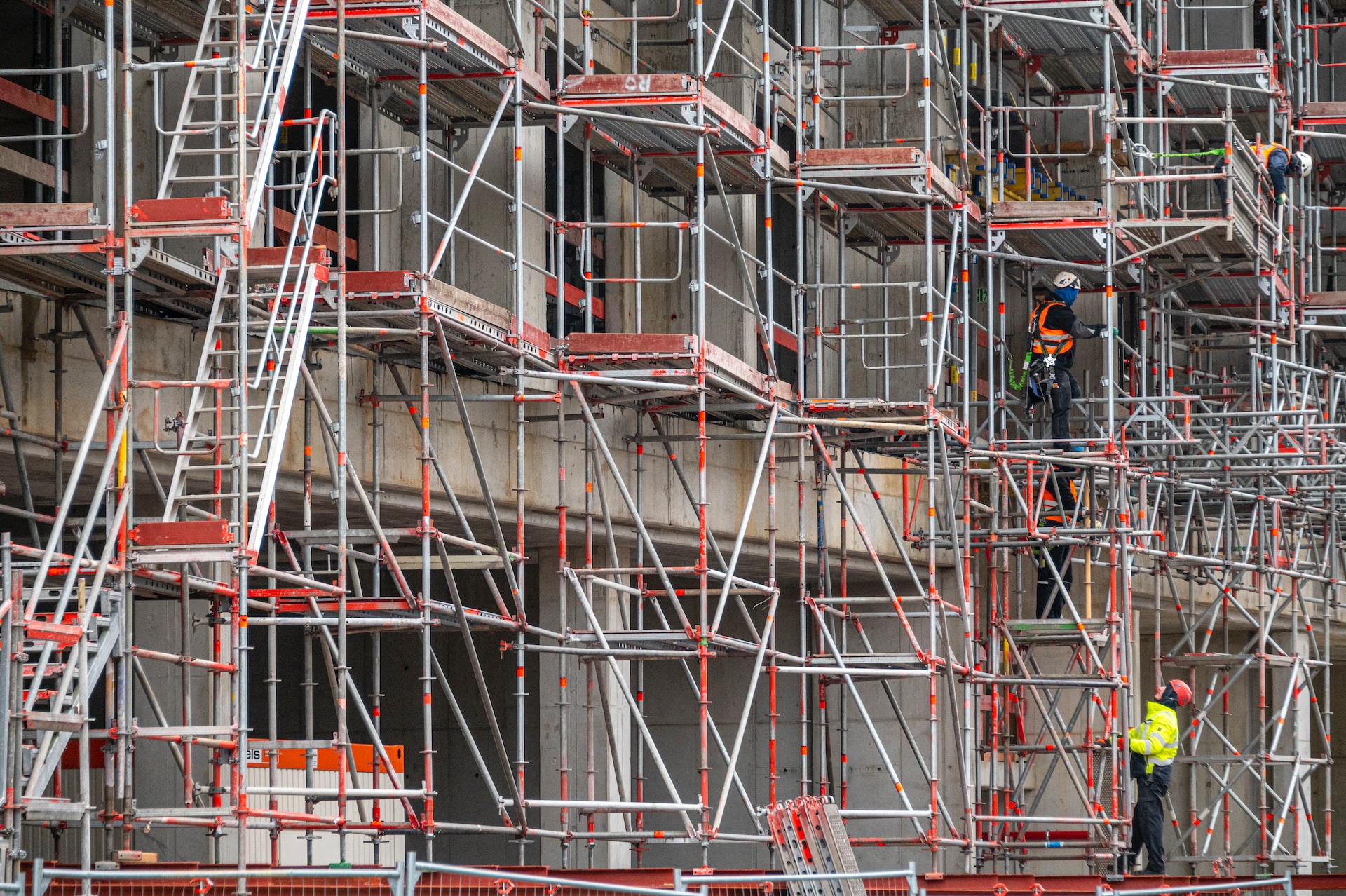Dependable Domestic Scaffolding for Homeowners in Need of Safe Renovations
Dependable Domestic Scaffolding for Homeowners in Need of Safe Renovations
Blog Article
Checking Out the Numerous Sorts Of Scaffolding Made Use Of in Construction Jobs
The building sector depends heavily on various sorts of scaffolding to meet particular project demands, each offering distinct advantages and applications. Traditional structure scaffolding provides a tough structure for basic jobs, while put on hold scaffolding is essential for work on high-rise structures. Other alternatives, such as system and rolling scaffolding, deal with efficiency and movement, respectively. In addition, the cantilever alternative proves invaluable in city environments where space is constricted. Recognizing the nuances of these scaffolding types is essential for maximizing safety and efficiency on building websites, prompting a closer exam of their special characteristics and applications.

Conventional Structure Scaffolding
Typical structure scaffolding is among the most extensively utilized methods in the construction market as a result of its effectiveness and convenience. This system contains upright and straight frameworks that are set up to develop a secure system for products and workers. The main parts consist of upright messages, horizontal journals, and angled braces, which with each other give a strong framework that can support substantial lots.
One of the crucial advantages of standard structure scaffolding is its versatility to numerous building and construction jobs, ranging from property buildings to big business structures. The modular layout permits very easy setting up and disassembly, making it efficient for both lasting and short-term projects. Furthermore, the system can be customized in elevation and width, suiting various structure designs and site conditions.
Security is paramount in scaffolding applications, and standard framework systems are equipped with guardrails and toe boards to avoid drops and ensure worker defense. Routine examinations and adherence to safety policies are vital in preserving the honesty of the scaffold (Scaffolding). Overall, conventional framework scaffolding remains a basic option in the building market, providing a trusted platform for labor and enhancing overall job efficiency

Suspended Scaffolding
Put on hold scaffolding provides an one-of-a-kind solution for building and construction jobs that require accessibility to raised surface areas, especially in situations where standard frame scaffolding might be unwise. This sort of scaffolding is typically suspended from the roofing or upper degrees of a framework, using a system of platforms, wheels, and ropes to produce a working area that can be adjusted to different elevations.
One of the key advantages of put on hold scaffolding is its versatility. It can be easily rearranged or decreased to fit adjustments in building and construction needs, making it ideal for jobs such as home window installment, façade job, and maintenance on skyscrapers. Furthermore, the marginal footprint of suspended scaffolding allows for far better use ground area in city atmospheres, where room is usually limited.
Safety is an important factor to consider in the use of put on hold scaffolding. On the whole, put on hold scaffolding gives a effective and efficient service for accessing hard-to-reach areas in numerous building circumstances, improving both efficiency and safety on site.
System Scaffolding
System scaffolding, commonly considered a modern-day option in the scaffolding sector, includes pre-engineered elements that can be rapidly put together and adapted for various construction tasks. Scaffolding. This kind of scaffolding is defined by its modular style, which enables versatility and performance on job sites, suiting architectural demands and various heights
Usually made from high-strength steel or aluminum, system scaffolding supplies boosted resilience and security. The elements include upright posts, straight journals, and diagonal braces, which adjoin safely, making certain a robust framework. The layout usually incorporates standard fittings, streamlining assembly and disassembly procedures, thus decreasing labor time and costs.

Rolling Scaffolding
Moving scaffolding is a functional choice to conventional fixed scaffolding, made for mobility and ease of usage on building sites. This kind of scaffolding includes a platform supported by frameworks with wheels, allowing employees to conveniently relocate it as needed. The mobility attribute significantly boosts productivity, as it minimizes downtime related to assembling and disassembling fixed scaffolding.
Usually constructed from lightweight materials such as light weight aluminum or steel, rolling scaffolding uses a durable yet portable remedy for tasks needing constant repositioning - Scaffolding. It is specifically useful in tasks such as paint, drywall setup, and electric work, where accessibility to different heights and areas is needed
Security is critical in rolling scaffolding layout, find this with features such as locking wheels to stop unexpected movement when in usage, and guardrails to secure click here to find out more workers from drops. Additionally, several models are flexible in height, fitting various task requirements.
Cantilever Scaffolding

The design of cantilever scaffolding usually involves using arms or braces anchored to a building or structure, enabling the platform to extend outward securely. Safety and security is paramount; therefore, these scaffolds should be engineered to withstand numerous loads and environmental conditions. Routine evaluation and maintenance are vital to make certain architectural stability and worker safety and security.
Cantilever scaffolding is preferred for its versatility and efficient usage of area, making it a popular selection in city atmospheres where space restraints are typical. It facilitates easier accessibility to high elevations, eventually contributing to the general effectiveness of construction jobs. Similar to all scaffolding types, proper training and adherence to security requirements are vital for employees utilizing cantilever scaffolding.
Final Thought
Traditional frame scaffolding offers stability, while suspended scaffolding uses convenience for raised jobs. System scaffolding promotes quick setting up, and rolling scaffolding improves wheelchair for differing job settings.
Traditional frame scaffolding provides a sturdy structure for general tasks, while suspended scaffolding is important for work on high-rise structures.Rolling scaffolding is a versatile choice to typical set scaffolding, made for wheelchair and ease of use my latest blog post on building sites. As with all scaffolding types, proper training and adherence to safety standards are vital for workers utilizing cantilever scaffolding.
Typical frame scaffolding gives security, while suspended scaffolding supplies versatility for elevated jobs. System scaffolding assists in quick setting up, and rolling scaffolding boosts flexibility for differing work settings.
Report this page